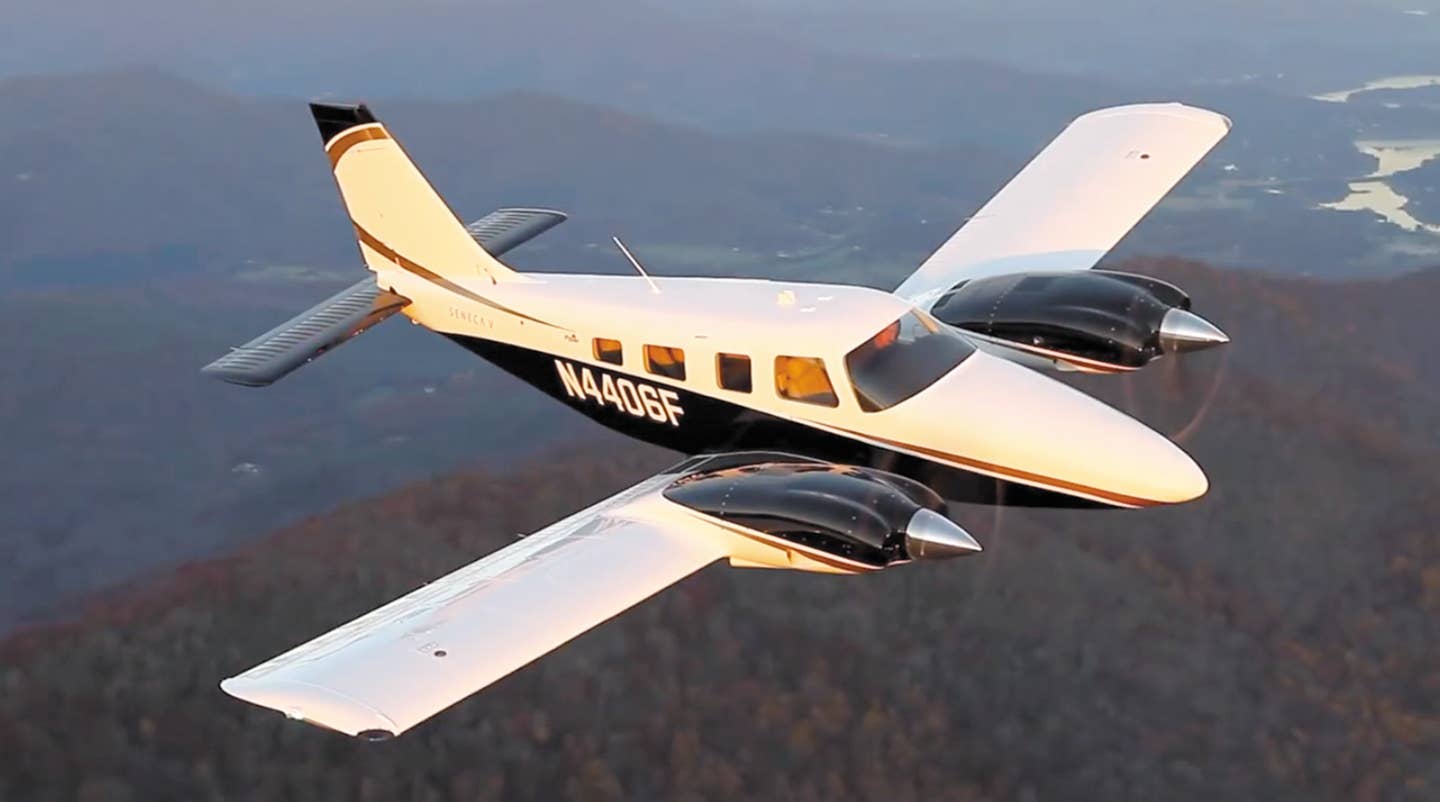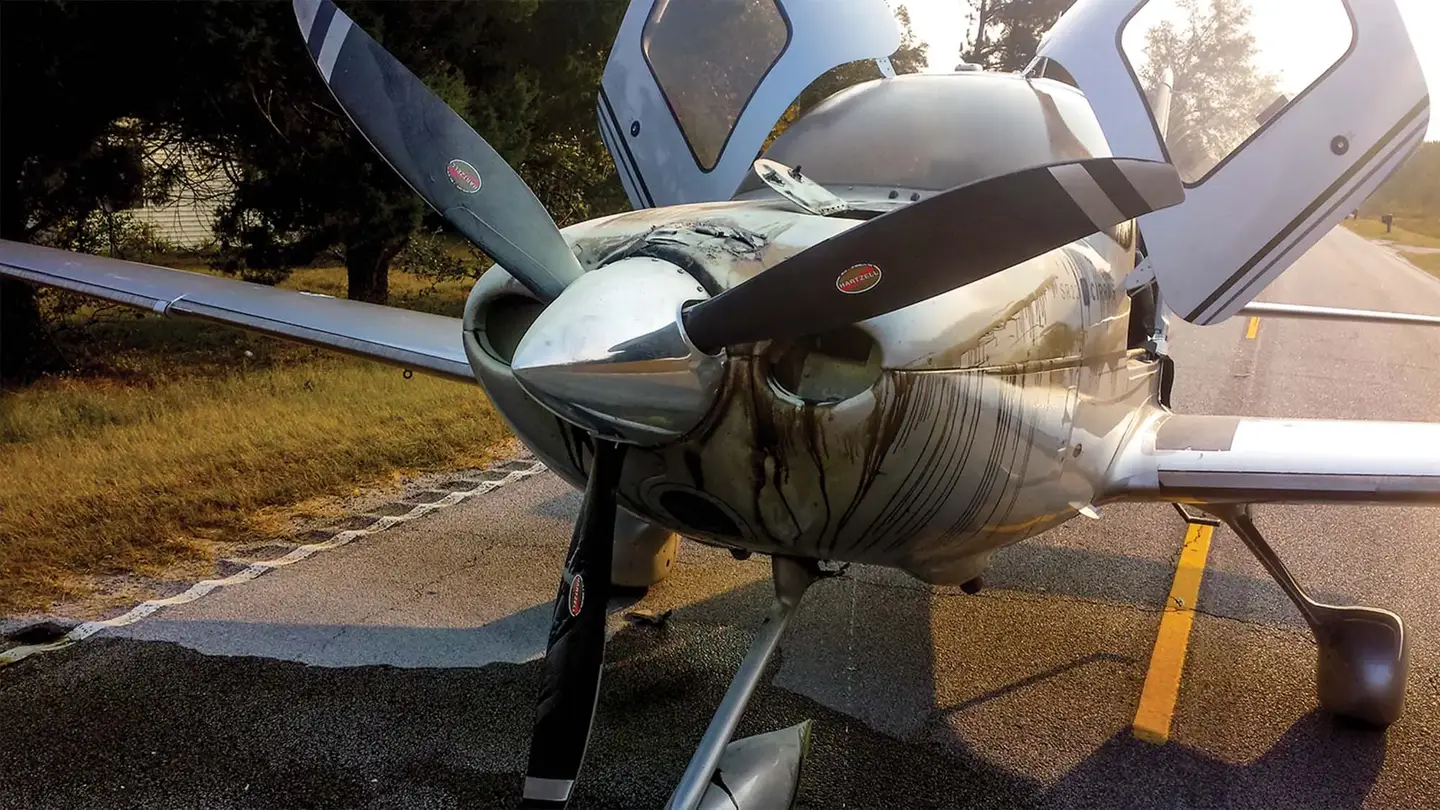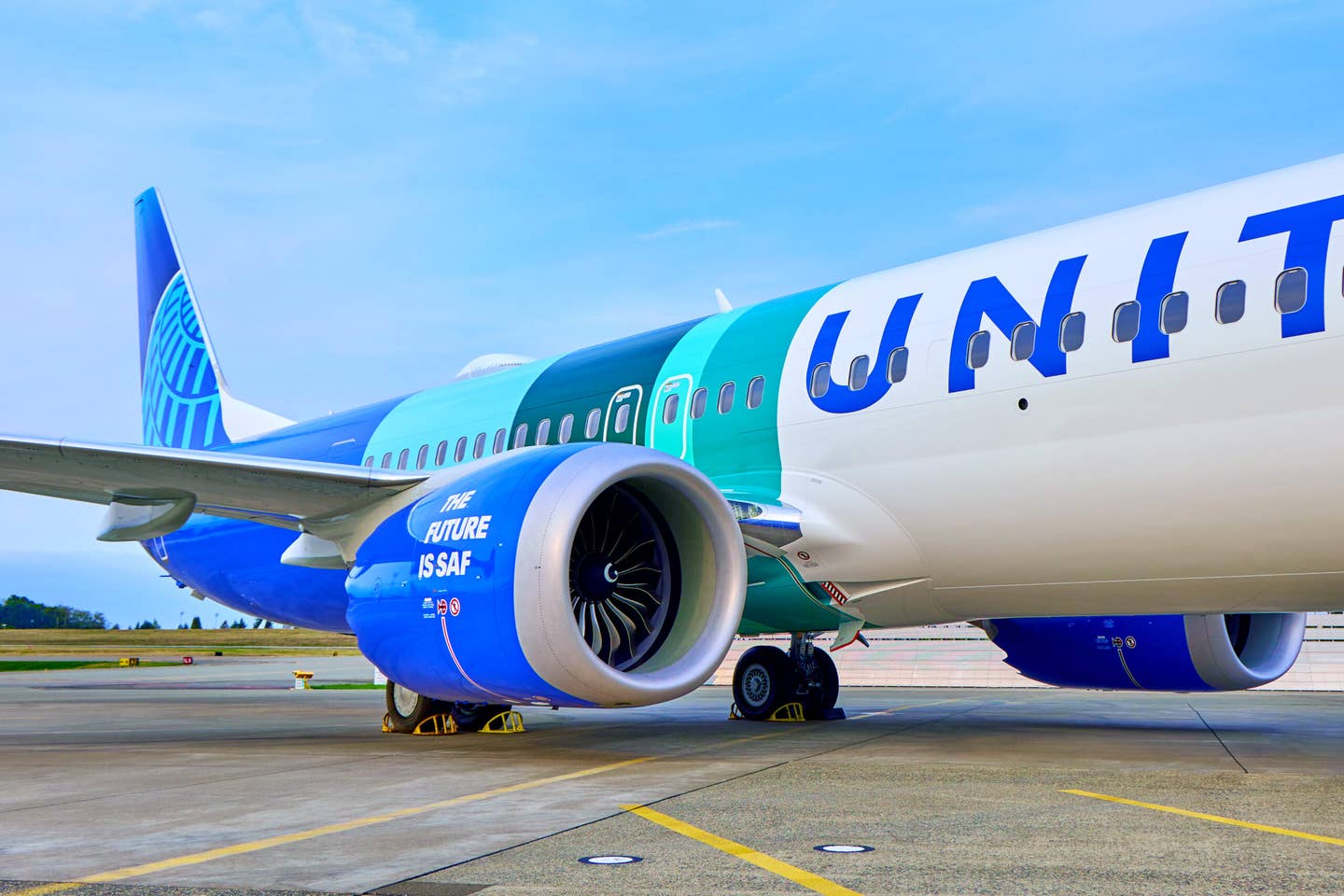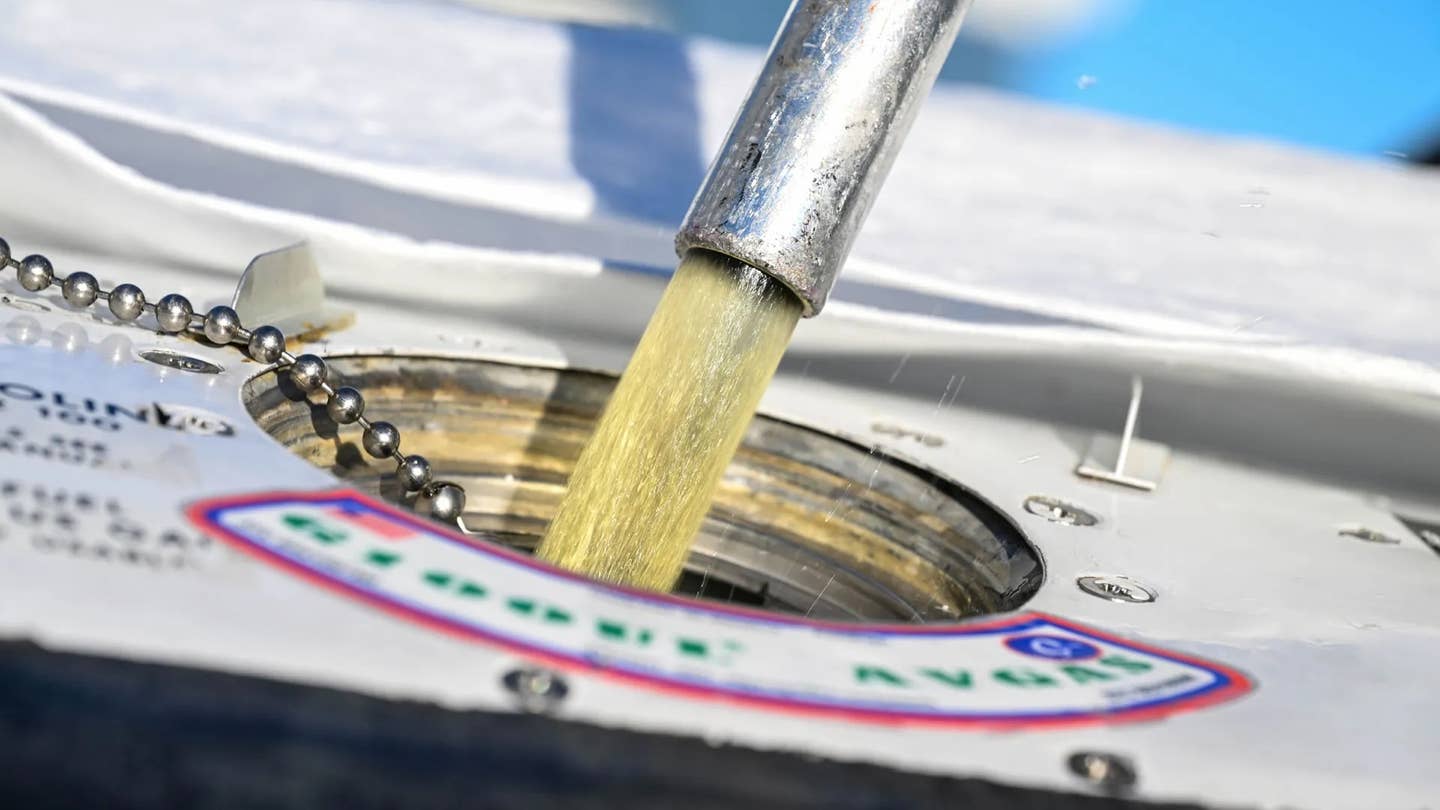Used Aircraft Guide: Piper Seneca
It’s easy to see why the Piper Seneca after all these years still makes sense as a step-up twin. Arguably, it does nothing extraordinarily well—it’s not exceptionally fast or a…

Above is a Seneca V. Prices are all over the board. The 2019 model is valued around $1.03 million, but a 1997 has a Bluebook of $265,000.
It’s easy to see why the Piper Seneca after all these years still makes sense as a step-up twin. Arguably, it does nothing extraordinarily well—it’s not exceptionally fast or a joy to fly compared to other light twins, nor will it turn heads on the ramp—but it does a lot well enough.
It obviously works well for multiengine training, which is why the normally aspirated Seneca I is often the go-to for flight schools looking to add a twin to the flight line. For go-places travel, the Continental-powered turbocharged Seneca II and later models are far better performers, but with more engine complexity that generally means more expense when the wheels roll on to the shop floor.
The current Aircraft Bluebook says the oldest Seneca I (1972 model) might retail for around $35,000, and that’s less than many basic singles.
Model History
To better understand the Seneca, look at the larger Cherokee models.
Saw off the wings of a Seneca and a Cherokee Six and you couldn’t tell the two apart. The Seneca first appeared in 1971, when GA was still a growing industry and there was actually headroom for new twins. At the time, the Aztec—a good seller for Piper—and the Comanche were growing long in the tooth and Piper needed something new.
The Seneca started out with counter-rotating Lycoming IO-360C1E6 engines producing 200 HP each (think of a Piper Arrow, times two) and at its introduction, it cost about the same as the Twin Comanche C/R model, but had larger engines, a higher gross weight and a roomier cabin with a rear door that the so-called Twinkie lacked. In other words, it was close to cabin-class comfort for about $63,000 equipped.
Both the Seneca and the Twin Comanche were built in 1972, but when Tropical Storm Agnes pushed the Susquehanna River into Piper’s Lock Haven works, the Twin Comanche drowned with it and the Seneca was moved to Piper’s new Florida operation.
Piper built 360 Senecas that year, a good start in the twin market where the competition was the Cessna Skymaster, which sold poorly in 1972. In three years, Piper sold 933 Seneca Is, dramatically outdoing the Aztec and Comanche.
Part of this was due, no doubt, to Piper’s decision to modernize the airframe. It dumped the Comanche’s byzantine plumbing, favoring a fuel system with only three positions: on, off and crossfeed. Since the airplane had counter-rotating props, there was no worry about critical engines, either.
The Seneca was based on the wildly successful PA-32 series with a long and wide cabin, true seating for six, a big aft door on the left and a cockpit door on the right. Since passengers might not like climbing over wings, this design proved a favorite among charter operators and for owners with big families. It still does. And despite its boxy shape, Piper applied some styling touches to make the aircraft fairly attractive. Early interiors, apart from that unfortunate velour upholstery, were also a step up from early efforts. The modern Seneca V has dropped one of the seats in favor of an optional entertainment/refreshment center. Add air conditioning, nice cabin lighting, leather and all of the other high-end amenities current buyers expect and it’s obvious the Seneca has come a long way—and with an even longer price tag.
The original Seneca I was a good start, but it was lacking, too. Pitch stability wasn’t the best and the controls were on the heavy side— Bonanza and Baron pilots wouldn’t like it much. The airplane also had noticeable Dutch roll in turbulence, which would tax the stomachs of the backseat passengers.
There were design and production issues, too, that led to a lot of ADs. Records indicate that the original Seneca is subject to close to 50 ADs, counting the shotgun ADs that apply to many other airplanes, a dubious record.
To its credit, Piper didn’t sit still. It corrected the Seneca’s handling and noise/vibration shortcomings. The ailerons were changed to a modified Frise design and made larger. The engine mounts were changed and soundproofing was added. Piper also changed some of the weights to give pilots the option of carrying more weight or more fuel. Gross weight was increased from 4000 to 4200 pounds. The increase carried with it a price, of course. Single-engine performance at the higher gross weight was marginal, at best.
Single-engine rate of climb sank from 230 FPM to 190 FPM and single-engine ceiling from 5200 feet to 3650 feet. Piper also introduced a new limitation: a zero-fuel weight of 4000 pounds, meaning that any weight over 4000 pounds had to be in fuel, not payload.
Seneca II Gets Turbos
With a strong if not a hot seller on its hands, Piper continued to improve the Seneca with the PA-34200T Seneca II. More changes were made to the control system to improve handling. The aileron/rudder interconnect was removed and with it went some control heaviness.
The rudder gained an anti-servo tab and the stabilator was changed with the addition of a bobweight. The ailerons were increased in span and balanced for lighter effort. This time, the changes worked and no major alterations were made after that.
But the big performance change for the Seneca II came in the powerplants, with the four-banger Lycs giving way to six-cylinder turbocharged Continental TSIO-360-E engines with fixed wastegates.
Rated at the same 200 HP at sea level, they produced 215 HP at 12,000 feet. Flying high and fast is nice, of course, but twin drivers worry more about high-altitude engine-out performance. Here, the Seneca II was a different beast entirely.
Single-engine climb rate improved to 235 FPM and single-engine ceiling more than tripled to 13,400 feet. Initial recommended TBO was the same 1400 hours. In 1977, this was increased to 1800 hours and owners report that with careful operation and maintenance, this is realistic. Still, most owners recognize that maintaining the Seneca I’s original Lycoming IO-360 powerplants might be an easier and cheaper affair.
The airplane got a higher gross weight, too, increasing by 370 pounds to 4570 pounds. However, the zero-fuel weight stayed at 4000 pounds, so the benefit was a mixed blessing. And another limiting weight was introduced: a maximum landing weight of 4342 pounds. Once again, pilots were given more flexibility and more ways to get into trouble if the loading limits weren’t obeyed.
With the improved controls and engines, the Seneca II also got optional extended-range fuel tanks that increased usable fuel from 93 to 123 gallons. The campaign against noise and vibration continued with the addition of a three-blade prop option, which weighed 46 more pounds.
The popular club seating option was also introduced, as was a Janitrol heater and optional fan to move heated or ambient air through the cabin. In later years, some system changes and options were added, such as a priming system to make engine start easier, more powerful brakes, modifications to the instrument panel, plus air conditioning. In 1980, a built-in oxygen system was offered.
Seneca III Forward
By the late 1970s, with sales still strong, Piper began overhauling its entire model line, introducing the tapered wings, and had a fling with T-tails in Arrows and Lances.
The 1981 Seneca III was supposed to have the same T-tail and tapered wing as the Lance, but Piper found that the flying qualities weren’t as good as the company had hoped. The configuration was left unchanged. There were still significant changes to the Seneca III, however. A different variant of the Continentals was used, with 220 HP each. These engines had a higher RPM limit (2800 versus 2575 RPM). This, combined with fuel scheduling, resulted in maximum power of 220 HP, albeit time-limited to only five minutes.
Continuous rated power was still 200 HP. Single-engine rate of climb improved marginally to 240 FPM and all-engine rate of climb went from 1340 to 1400 FPM. However, most other performance figures, such as runway required, declined somewhat due to a further increase in allowable weights, the unavoidable bugaboo of every manufacturer.
The new weight limits were made possible by a reinforced structure. This time, the zero-fuel and landing weights were raised as well. Maximum takeoff weight was now 4750 pounds, zero-fuel weight 4470 pounds and max landing weight 4513 pounds. The pneumatic system (for air-driven instruments and optional de-ice system power) was changed from a pressure to a vacuum system in 1981. According to Piper, this improved mean time between pump failures from an average of 400 hours to more than 700 hours. Owners say that in the field, the pressure pumps last about the same as vacuum pumps.
Other changes to the Seneca III included a new and more modern instrument panel, a one-piece windshield and a switch to electric flaps. We’ve always been fans of manual flaps: They’re simple, positive and hard to break. The move to electric flaps was required because of a change to larger flaps, which resulted in high actuation forces.
Amazingly, the Seneca never went out of production, even during Piper’s troubled times in the late 1980s and early 1990s. Admittedly, production was down to a trickle (four were built in 1992, for example), but it stayed on the price lists. And it’s still there today.
As part of Piper’s transformation into New Piper, the Seneca was revamped yet again, being redubbed the Seneca IV and later, the Seneca V. Relatively few design changes were made, the most notable being new cowlings that result in higher speeds. Also, the interiors have been markedly improved in recent models, while Garmin’s G1000 integrated avionics fill the instrument panel— completely full.
The Seneca’s wide cabin allows for a wide instrument panel, of course. This means the aircraft is fitted with the three-screen version of Garmin’s G1000 glass avionics suite. This includes dual primary flight displays (PFDs) for both the pilot and copilot, plus a large multi-function display (MFD) in the center. The Seneca V also has Garmin’s integrated GFC 700 flight control system and electronic engine instrumentation.
Along with these improvements come much higher prices: When the Seneca IV was introduced in 1994, it sold for about $425,000. A new Seneca V tops $1 million, making a run at the G58 Baron. The current Aircraft Bluebook says a 2017 Seneca retails for $900,000, and a 2019 is $1.03 million.
Performance, Cabin, Comfort
All of the Senecas offer fairly good short-field performance and sea level fields of 3000 feet or so are no problem as long as both engines are turning. As noted above, however, later versions are better once airborne. Of all the light twins, the Seneca is among the most benign in the runway environment.
It’s not a fast airplane, however. The normally aspirated early models cruise in the 160- to 170-knot range at 65 percent and 10,000 feet. Limiting speeds are low: 129 to 130 knots for gear extension; 138, 121 and 107 knots for 10-, 25- and 40-degrees flaps, respectively.
One owner we spoke to highly recommends that speedbrakes be fitted. The turbocharged models are, of course, quite a bit faster, especially when taken high. Owners report cruise speeds in the 180-knot or faster range in the high teens and low flight levels on typical fuel flows of 24 to 28 GPH.
The later Senecas are decent haulers. Loading the Seneca is about as easy as it gets. The fuselage is low to the ground, allowing rear passengers to climb on board easily, and the rear seats are easy to remove. The two baggage compartments have weight limits of 100 pounds apiece. The generous CG range permits flexibility in seat selection and the later models were equipped with a clever visual slide-rule type CG computer, which makes loading a snap.
Owners tells us that early Senecas have useful loads in the 1200- to 1300-pound range while the Seneca II averages closer to 1500 pounds, with its higher gross weight of 4570 pounds. The latest iteration, the Seneca V, has regressed due to higher empty weight, with useful loads in the 1300- to 1400-pound range. That’s the case with many new aircraft, the result of weight-gaining creature comforts. It’s a tradeoff. With its four-foot-wide cabin, adequate seating for all but the biggest of six people and ample windows, the Seneca is long on comfort in comparison to most other piston-powered airplanes in this class. Although the club seating often yields a tangle of legs in the rear cabin, it’s still appreciated by passengers, according to owners who have contacted us. Given its payload, the Seneca is a good five-person airplane with some baggage or a four-person airplane with a lot of baggage, stowed in either the nose compartment or behind the rear seats in the cabin.
Flight visibility from the cabin is adequate, but not exceptional. The big windows are nice but up front, the large engine nacelles extend forward of the wing leading edge, blocking horizontal and downward visibility.
This, coupled with the wide-chord wing, makes spotting traffic below the airplane difficult. Heating and ventilation are typical Piper, with overhead and floor vents that provide enough air in most circumstances. Seats are also typical Piper, which is to say reasonably comfortable but with a tendency to sag and wear with use. Most owners recommend overhauling them.
Mods
Senecas, beginning with the II, came with fixed wastegate turbochargers. These are relatively simple and inexpensive to manufacture, but at the cost of efficiency as well as longevity and a tendency to overboost due to sensitive throttle response. Owners say a must-have mod is to fit the engines with Merlyn automatic upper deck air controllers. We’ve heard good reports about these mods and other owners tell us intercoolers can also help. (Contact www.merlynproducts.com or 509-838-7500.)
Due to the low speed restrictions, speedbrakes are a good investment, particularly in heavy traffic areas. Precise Flight makes a set for the Seneca, and plenty of other models. Visit www.preciseflight.com. For Seneca I owners who want turbocharging, the old Rajay is found on some used models, but is generally no longer installed.
Seneca II and III owners can improve their turbos with the Turboplus intercoolers in kit form. Contact www.turboplus.com. Although the takeoff and landing numbers on the Seneca are decent, owners who want better performance can invest in Sierra Industries’ R/STOL kit. Call for pricing and expect a long lead time. Contact www.sijet.com for more information.
Hartzell Propeller had an aggressive program to install three-blade propellers on the Seneca II and III. The STCs can replace either two-blade Hartzell or three-blade McCauley propellers. The three-blades offer better takeoff and initial climb and also eliminate the RPM/MP restriction applicable to the two-blade propellers. Contact Hartzell at www.hartzellprop.com.
The Piper Owner Society supports Seneca buying and ownership and is a good general resource for Pipers of all sorts. Contact www.piperowner.org. Another group is the Piper Flyer Association at www.piperflyer.org.
Owner Comments
I have owned N8467X, a Seneca III, since 1985, having bought it when it was three years old having already flown 650 hours. It is one of the first third-generation models, with a 1982 serial number, but actually produced in December 1981. By now, I have put another 2250 hours on the Hobbs, which, incidentally, runs only when the indicated airspeed is above 50 knots, so I really logged roughly 2300 hours.
It has been an excellent machine for me. It’s very reliable—fewer than a dozen maintenance cancellations over the 30-plus years. There have also been a few weather cancellations, mainly when an impenetrable line of thunderstorms intervened between point A and point B. Having added GPS and XM satellite datalink, weather flying is ever so much easier nowadays.
The operating expenses have been $364 per hour, allowing for $60,000 per engine reserves, which have an 1800-hour TBO. For the purposes of estimating maintenance costs (I am including annual inspection and repairs), I have found that the plane requires about one hour of maintenance per one hour of flying, with usage of 100 hours per year. The $110 hourly shop rate therefore is a rough estimate of this expense. Double that if flying only 50 hours per year.
Fixed expenses have been $3400 for insurance and $7560 for my T-hangar. The insurance premium is based on a replacement hull value of $150,000, and $1 million liability, and reflects that I hold an ATP certificate with more than 2000 hours in type. The amortization figure is uncertain, since the plane cost me $140,000 in 1985, and is now (with two aging engines) worth about the same, and in any case would vary from owner to owner depending on finances. As an approximation, with used-airplane values being what they are, the plane is essentially free if you don’t have to finance it. It helps that the Seneca is statistically the world’s safest light twin with relatively high demand for used models, compared to other twins.
I should comment on two aftermarket mods I had installed. I had Turboplus intercoolers and speedbrakes added as soon as I bought it. I’m sure they contributed to my good fortune with the engines. Each engine gave out in turn by spinning a main bearing, one at 1450 hours, the other at 1500 hours. More important was the calendar life: one engine, 13 years since new and the other 14 years.
Now they are on their second run, already past the life of the first run, and in all that time, I’ve replaced only one cylinder for low compression. (Yes, they are the original Continental TSIO-360s.) The intercoolers keep CHTs always comfortably in the green, and the speedbrakes allow descents without shock-cooling. I actually leave one oil winterization plate on all year to keep the oil warm enough to boil off condensation.
My philosophy of leaning has been that an extra GPH or two costs very little compared to top overhauls, and so I do not lean aggressively. My A&P tells me at each inspection that I have had some of the best luck of all his customers with the TSIO-360s.
Now the intercoolers have been completely trouble free, but I can’t say the same for the original speedbrakes. They were a repetitive source of trouble including broken retract springs and associated cotter pins, and eventual failure of the hydraulic powerpack requiring replacement with an all-electric system. I can testify to the fact that the plane is fully controllable with only one speedbrake deployed—been there, done that several times.
The all-electric system, however, does seem to have solved these problems. I do have to be careful to check the drains in the speedbrake boxes, as otherwise water can accumulate in the bottom, freeze at altitude and prevent full retraction.
The turbochargers have not been a problem for me. I have read of some others cracking, but presumably the intercoolers are helping me. I have always been careful on shutdown to idle for fully two minutes as the factory recommends, allowing the turbos to spin down before the oil pressure drops to zero.
As a transportation machine, the plane is a real delight. It is stable, docile on one engine (with counterrotating props), reassuring with its license to fly in known ice and combination XM weather link, ship radar and Stormscope, as well as the usual Flight Director coupled to the GPS. The yaw damper is very much appreciated by the rear seat passengers.
The cabin is capacious for four (I have carried six only twice in 34 years), and hauls plenty of cargo. Without pressurization, it can never be the ultimate personal airplane, but it is pretty close. I file for 180 knots, planning non-oxygen cruise at 10,000 to 11,000 feet. Again, this will be 25 GPH, running just above 65 percent, and the intercooler effect must be coming into play to allow these numbers with a plane having boots, many antennas and three-bladed props.
On a few occasions I have been up to the lower flight levels, where I can get 190 knots at about the same fuel flow. I can even get 190 knots at 15,000 feet if I push it up to 28 GPH, or 75 percent.
In summary, the Seneca III provides comfortable, confident, generally reliable 200-MPH transportation for four with bags, in most weather, at about $350 per hour (moving cost only). My family and I have been absolutely delighted with it now for 34 years.
- Phillip E. Steeves
Smashed Senecas: Training Wrecks
The underlying theme of the 100 most recent Seneca accidents was something going wrong on a multi-engine training flight. If there were a way to mishandle multi-engine flight training, CFIs and single-engine pilots working on multi-engine ratings did it.
Three CFIs shut off the fuel to one engine and then forgot that they had done it until the student needed power from both engines and got a lot of silence out of one engine cowling upon advancing both throttles. One CFI cut power to an engine with the mixture while on downwind. The student mishandled the engine stoppage and the CFI couldn’t rectify things before the airplane hit the ground. CFIs delayed stepping in when students blew single-engine approaches or go-arounds until the situation was beyond salvage. Two students and CFIs got fascinated with single-engine approaches and forgot to extend the gear.
We did feel for the CFI who called for a go-around in the flare and had the student only advance one throttle. There was apparently only a second or two until a wingtip went into the ground.
The FAA has published a number of guidelines and recommendations for multi-engine training, including discouraging simulating an engine failure with the fuel selector or mixture control, especially at low altitude. We can’t help but suspect that Seneca accidents played a major role in the creation of that FAA guidance.
While most of the people involved in multi-engine training mishaps survived, there were a significant number of major injuries and deaths. A VMC loss of control event frequently leads to the airplane rolling and pitching down rapidly—often resulting in nonsurvivable ground impact inverted and/or steeply nose down.
A single-engine approach is an emergency procedure. It has to be practiced for multi-engine training. We strongly recommend against carrying passengers during single-engine training flights. Too many passengers have died when those training flights went wrong.
Outside of training, we were impressed by some of the Seneca’s accident history. The runway loss of control (RLOC) was below average, as were fuel-related accidents. We also think that the landing gear system is robust—there were only four gear-collapse incidents.
The number of landing accidents due to hard/bounced/porpoised landings got our attention. At 14, we consider that to be high. Combined with seven overshot landings and flying the Seneca over the years, our opinion is that the PA34 is not tolerant of carrying extra speed on final.
The number of engine/mechanical failures was extremely low—six—and half of those were prop blade failures due to failure to perform an AD.
Piston twins do not perform well on one engine. The Seneca is no exception. One pilot had an engine problem, feathered the prop and came in for landing high and fast. He tried to go around at 10 feet with the gear and flaps down—and 165 pounds over gross. If he had been able to clean up the airplane, he would have had an 80 FPM rate of climb. He lost control and crashed before he was able to do the cleanup.
This article originally appeared in the December 2019 issue of Aviation Consumer magazine.
For more great content like this, subscribe to Aviation Consumer!






